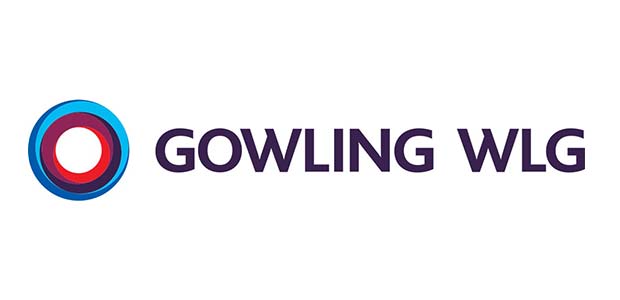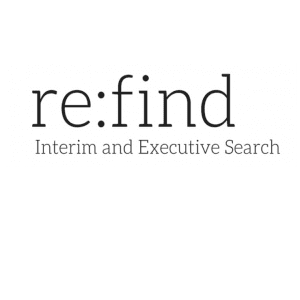In today’s rapidly changing business environment, organisations must be able to adapt quickly to remain competitive. To achieve this, they must constantly strive to improve their processes, systems, and culture. Organisational development is a systematic approach to change management that aims to enhance an organisation’s overall effectiveness and performance. It involves a range of interventions, such as team building, leadership development, change management, and performance management, that are designed to help individuals, teams, and the organisation as a whole to work more effectively, efficiently, and cohesively.
Mastering the craft of organisational development is essential for any organisation seeking to achieve sustained success. By developing a deep understanding of the principles and practices of organisational development, leaders can create a culture of continuous learning and improvement that enables their organisation to adapt and thrive in a rapidly changing business environment.
In this blog, we’ll explore the keys to successful organisational development, including the principles and practices that underpin it, and the benefits it can bring to your organisation. Whether you’re a business leader, a human resources professional, or an organisational development practitioner, this blog will provide you with valuable insights and practical tips for mastering the craft of organisational development. So, let’s get started!
What is organisational development?
Organisational development (OD) is a planned, systematic process of change that helps organisations improve their effectiveness. It involves the use of behavioural science knowledge and techniques to diagnose organisational problems and to develop and implement strategies that will lead to improved organisational performance.
OD can be broad ranging, including changes to an organisation’s structure, culture, leadership, systems, and processes. The ultimate goal of OD is to help organisations become more adaptable, innovative, and responsive to the changing needs of their customers, employees, and other stakeholders.
OD is often used by a company to solve issues, such as low employee morale, high turnover rates, or ineffective communication. OD practitioners collaborate closely with organisational leaders and staff to identify the root causes of these issues and create solutions that are tailored to the unique needs of the organisation.
Overall, the goal of OD is to create a healthy and productive work environment that supports the achievement of organisational goals while also promoting the well-being and development of employees.
OD strategy for your business
Organisational development (OD) can be used to support and enhance business strategy in several ways. Some of the key ways that OD can be used for business strategy are:
- Aligning the organisation’s structure with its strategy: OD practitioners can help businesses to design their organisational structure to better support their strategic goals. This can involve creating new departments or teams, redefining roles and responsibilities, or streamlining processes to increase efficiency and effectiveness.
- Building a high-performance culture: OD an be used to create a culture of high performance that supports the achievement of business goals. This can involve developing leadership skills, promoting teamwork, and establishing a set of shared values and behaviours that support the organisation’s strategic objectives.
- Developing talent: OD can be used to identify and develop the skills and capabilities that are required to execute the organisation’s business strategy. This may involve implementing training and development programs, coaching and mentoring, or succession planning to ensure that the organisation has the talent it needs to achieve its goals.
- Improving communication and collaboration: OD interventions can help to improve communication and collaboration within the organisation, which is essential for successful execution of business strategy. This can involve improving internal communication channels, implementing team-building initiatives, and promoting a culture of transparency and openness.
WHAT ARE SOME OF THE CHALLENGES ORGANISATIONS FACE WITH REGARDS TO ORGANISATIONAL DEVELOPMENT?
Organisations that fail to invest in effective organisational development may face a range of challenges that can impact their performance and sustainability. Here are some of the challenges that poor organisational development can create:
- Lack of Adaptability: Poor organisational development can lead to a lack of adaptability, making it difficult for organisations to respond to changes in the business environment. This can result in lost opportunities, decreased competitiveness, and even business failure.
- Low Employee Engagement: Poor organisational development can lead to low levels of employee engagement and motivation, which can result in reduced productivity, high turnover rates, and difficulties in attracting and retaining talent.
- Ineffective Leadership: Poor organisational development can result in ineffective leadership, as leaders may not have the skills and knowledge to effectively manage and develop their teams. This can result in poor decision-making, low morale, and a lack of direction within the organisation.
- Inefficient Processes: Poor organisational development can lead to inefficient processes, as teams may not be structured in an optimal way or have the necessary skills to perform their roles effectively. This can result in delays, errors, and increased costs.
- Poor Company Culture: Poor organisational development can also result in a negative company culture, where employees do not feel valued or supported, and there is a lack of trust and collaboration within the organisation. This can result in high levels of absenteeism, low job satisfaction, and difficulties in retaining talent.
HOW CAN ORG DEVELOPMENT FIT IN TO AN OVERALL HR TRANSFORMATION PROGRAMME?
Organisational development (OD) can play a critical role in an overall HR transformation programme, as it focuses on enhancing the performance and effectiveness of the organisation as a whole. Here are some ways that OD can fit into an HR transformation programme:
- Alignment with HR Strategy: Organisational development initiatives should align with the broader HR strategy of the organisation. By doing so, they can support the organisation’s overall goals and contribute to a comprehensive HR transformation programme.
- Cultural Transformation: Organisational development can play a key role in driving cultural transformation. By promoting a culture of continuous learning and improvement, OD can help to foster a growth mindset and promote innovation, which are essential for success in today’s fast-paced business environment.
- Talent Management: Organisational development can help organisations to develop their talent management practices, including recruitment, training, and development. By focusing on the development of people, OD can help to create a more engaged and productive workforce.
- Change Management: Organisational development can provide a framework for managing change effectively. By using OD techniques, organisations can help their employees to adapt to change and ensure that the changes they implement are sustained over the long term.
- Leadership Development: Organisational development can play a key role in developing leadership capability within an organisation. By focusing on leadership development, OD can help to create a strong pipeline of talent and ensure that the organisation is well-equipped to deal with future challenges.
OD career options
Typically, a career journey in OD involves the following stages:
- Entry-level OD roles: Individuals may begin their OD career as an OD coordinator, analyst, or assistant. In these roles, they would support the implementation of OD interventions, analyze data, and assist with communication and stakeholder engagement.
- OD specialist: As individuals gain experience and expertise in OD, they may advance to a specialist role where they lead specific OD interventions or projects. This may include designing and implementing change management initiatives, developing leadership development programs, or conducting organisational assessments.
- OD consultant: Experienced OD professionals can move in to consulting where they work with external clients to provide OD advice and support. They may work for a consulting firm such as one of the big 4 (PWC, KPMG, Deloitte or EY) or as an independent consultant. They will provide a wide range of OD services, including strategic planning, leadership development, and team-building.
- OD manager/director: Some people decide to progress they may move into a management or director-level role where they oversee the OD function within an organisation. In this role, they would be responsible for developing and implementing the OD strategy, managing a team of OD professionals, and working closely with senior leaders to align OD initiatives with business goals.
- Executive-level OD roles: In some cases, experienced OD professionals may advance to an executive-level role within an organisation, such as Chief People Officer or Chief Human Resources Officer. In these roles, they would drive the overall people strategy for the organisation, which includes OD initiatives aimed at improving organisational effectiveness and driving business results
Our focus on long-term partnerships
At re:find Executive Search we believe that recruitment is not a one-off transaction but rather a long-term partnership. By building long-term relationships with our clients, we help them to find and retain the best talent for their organisation.
Every organisation is unique and we feel that there is no one-size-fits-all solution when it comes to recruitment. re:find offer bespoke recruitment solutions, that are tailored to meet the specific needs of each client. Whether you need help with a single hire or a full recruitment campaign, we can help.
We commit to providing our clients with the highest quality service. We take the time to understand your organisation’s culture and values, as well as the specific skills needed for each campaign.
For more information please get in contact with our Managing Director, James Cumming.







